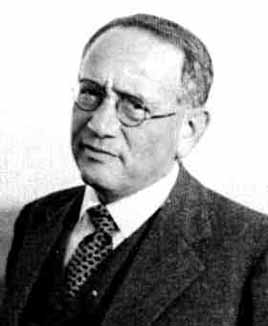
Recently a colleague of mine came with a simple question related to his second year probability classes: how to prove that an asymmetric random walk diverges to infinity almost surely, without using the Borel-Cantelli lemma, the law of large numbers, or Markov chains tools such as stopping times and recurrence/transience?
A natural answer to is prove all what is needed from scratch, which turns out to be pretty short and intuitive for the random walk. More precisely, let \( {{(S_n)}_{n\geq0}} \) be an asymmetric random walk on \( {\mathbb{Z}} \) started from the origin, namely \( {S_0=0} \) and for any \( {n\geq1} \)
\[ S_{n}=S_{n-1}+X_{n}=X_1+\cdots+X_n, \]
where \( {{(X_n)}_{n\geq1}} \) is a sequence of independent and identically distributed random variables following an asymmetric Rademacher distribution:
\[ p:=\mathbb{P}(X_n=+1)=1-\mathbb{P}(X_n=-1)\neq\frac{1}{2}. \]
Our objective is to prove that
\[ \mathbb{P}(\lim_{n\rightarrow\infty}S_n=-\infty)=1 \quad\text{if}\quad p<\frac{1}{2} \]
and
\[ \mathbb{P}(\lim_{n\rightarrow\infty}S_n=+\infty)=1 \quad\text{if}\quad p>\frac{1}{2}. \]
The idea is to show that \( {{(S_n)}_{n\geq1}} \) is captured after a random time by a cone centered around \( {\mathbb{E}(S_n)=nm} \) where \( {m:=\mathbb{E}(X_i)=2p-1\neq0} \), of width \( {\delta_n\ll n} \). To see it, for any \( {\delta_n>0} \) to be chosen later, we introduce the event
\[ A_n:=\{|S_n-nm|\geq\delta_n\}. \]
The Markov inequality gives (trying with \( {2} \) instead of \( {4} \) shows that \( {2} \) is not enough)
\[ \mathbb{P}(A_n) =\mathbb{P}((S_n-nm)^4\geq\delta_n^4) \leq\frac{\mathbb{E}((S_n-nm)^4)}{\delta_n^4}. \]
But, denoting \( {X_i':=X_i-m} \), we get \( {\mathbb{E}(X'_i)=0} \) and \( {S_n-nm=X_1'+\cdots+X_n'} \) and
\[ \mathbb{E}((S_n-nm)^4) =\mathbb{E}((X_1'+\cdots+X_n')^4) =\mathcal{O}(n^2)\mathbb{E}(X_1'^2)+n\mathbb{E}(X_1'^4) =\mathcal{O}(n^2) \]
where we used the fact that the \( {X'_i} \)'s are centered, independent, and bounded in \( {L^4} \): \( {\sup_{n\geq1}\mathbb{E}(X_n'^4)<\infty} \). Therefore for any \( {\delta_n=n^\alpha} \) with \( {\alpha>0} \) to be chosen later,
\[ \mathbb{P}(A_n)=\mathcal{O}\left(\frac{1}{n^{4\alpha-2}}\right) \quad\text{and thus}\quad \sum_{n=1}^\infty\mathbb{P}(A_n)<\infty \]
as soon as \( {\alpha>3/4} \). Let us introduce now the random variable
\[ Y:=\sum_{n=1}^\infty\mathbf{1}_{A_n}. \]
The Fubini-Tonelli theorem or the monotone convergence theorem gives
\[ \mathbb{E}(Y) =\mathbb{E}\left(\sum_{n=1}^\infty\mathbf{1}_{A_n}\right) =\sum_{n=1}^\infty\mathbb{E}(\mathbf{1}_{A_n}) =\sum_{n=1}^\infty\mathbb{P}(A_n) <\infty. \]
Since \( {Y} \) takes its values in \( {[0,\infty]} \), it follows that \( {\mathbb{P}(Y<\infty)=1} \), in other words, almost surely, the series \( {\sum_{n=1}^\infty\mathbf{1}_{A_n}} \) converges, in other words, almost surely, for \( {n} \) large enough (above a random threshold), we have
\[ |S_n-nm|<\delta_n=n^{\alpha}, \]
and by taking \( {3/4<\alpha<1} \), it follows that \( {{(S_n)}_{n\geq1}} \) diverges to \( {+\infty} \) if \( {p>1/2} \) since \( {m>0} \) and to \( {-\infty} \) if \( {p<1/2} \) since \( {m<0} \) (drawing a picture with a cone may help!).
Note. This proof works beyond the case of \( {\pm1} \) increments and requires only independence and boundedness in \( {L^4} \). Actually the same argument gives a quick proof of the strong law of large numbers for independent random variables bounded in \( {L^4} \) with same mean \( {m\in\mathbb{R}} \):
\[ \mathbb{P}\left(\lim_{n\rightarrow\infty}\frac{S_n}{n}=m\right)=1. \]
Namely since \( {\mathbb{E}((\frac{S_n}{n}-m)^4)=\mathcal{O}(\frac{1}{n^2})} \), we get \( {\mathbb{E}(\sum_{n=1}^\infty(\frac{S_n}{n}-m)^4)<\infty} \), and therefore \( {\mathbb{P}(\lim_{n\rightarrow\infty}(\frac{S_n}{n}-m)^4=0)=1} \), which means that \( {\mathbb{P}(\lim_{n\rightarrow\infty}\frac{S_n}{n}=m)=1} \). This strong law of large numbers provides in turn the almost sure divergence of the asymmetric random walk.
The argument provides also a quick proof of the first Borel-Cantelli lemma by using the Fubini-Tonelli theorem or the monotone convergence theorem. Namely, if \( {{(A_n)}_{n\geq1}} \) is a sequence of events such that \( {\sum_{n=1}^\infty\mathbb{P}(A_n)<\infty} \), then \( {\mathbb{E}(\sum_{n=1}^\infty\mathbf{1}_{A_n})<\infty} \) and thus \( {\mathbb{P}(\sum_{n=1}^\infty\mathbf{1}_{A_n}<\infty)=1} \) which means that \( {\mathbb{P}(\limsup_{n\geq1}A_n)=0} \).
Note. The classical Markov chain way to prove the result consists in using the fact that \( {{(S_n)}_{n\geq0}} \) is a Markov chain with state space \( {\mathbb{Z}} \) and transition matrix \( {\mathbf{P}_{x,y}=p\mathbf{1}_{y=x+1}+(1-p)\mathbf{1}_{y=x-1}} \). This matrix is irreducible, and therefore it suffices to show that the state \( {0} \) is transient. The chain has period \( {2} \) and therefore \( {\mathbf{P}^{2n+1}(0,0)=0} \) for any \( {n\geq0} \). For \( {\mathbf{P}^{2n}_{0,0}} \), the coin tossing game due to the \( {\pm1} \) increments gives \( {(S_n-S_0+n)/2\sim\mathrm{Binom}(n,p)} \), which yields
\[ \mathbf{P}_{0,0}^{2n} =\mathbb{P}(S_{2n}=0\mid S_0=0) =\binom{2n}{n}p^n(1-p)^n \sim_{n\rightarrow\infty} \frac{\rho^n}{\sqrt{\pi n}} \]
where \( {\rho:=4p(1-p)} \). Now \( {p\neq1/2} \) gives \( {\rho<1} \), and thus
\[ \mathbb{E}\left(\sum_{n=1}^\infty\mathbf{1}_{S_n=0}\mid S_0=x\right) =\sum_{n=1}^\infty\mathbf{P}^{n}_{0,0} =\sum_{n=1}^\infty\mathbf{P}^{2n}_{0,0}<\infty, \]
which shows that the chain is transient.
Leave a Comment